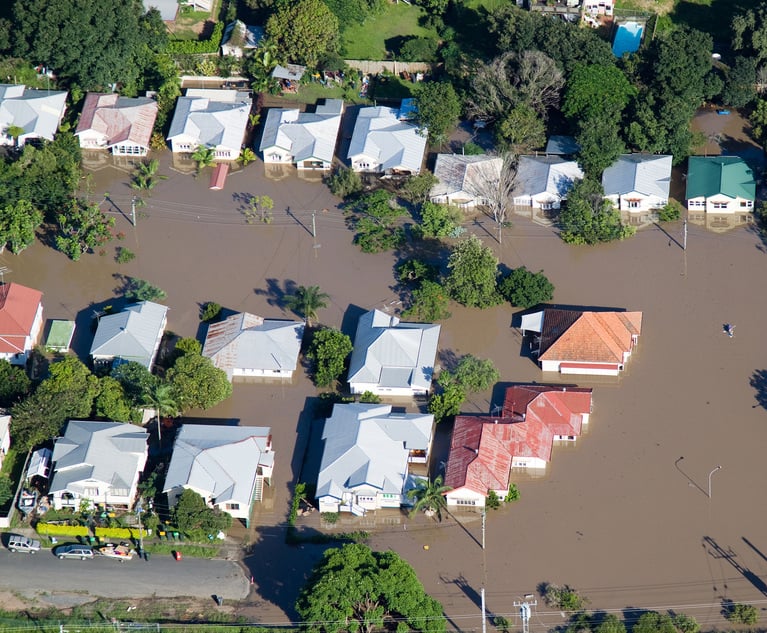 Flood insurance covers direct physical damage to insured property up to the "replacement cost or actual cash value of the damages or the policy limit liability, whichever is less," according to an NFIP bulletin. Credit: On-Air/Adobe Stock
Flood insurance covers direct physical damage to insured property up to the "replacement cost or actual cash value of the damages or the policy limit liability, whichever is less," according to an NFIP bulletin. Credit: On-Air/Adobe Stock
A common misconception policyholders carry is that a standard home policy will cover them in the event of a flood. They typically do not, which makes for a huge oversight as the Federal Emergency Management Agency reported that from 1996-2019 nearly all (99%) of U.S. counties were affected by flooding.
Recommended For You
Want to continue reading?
Become a Free PropertyCasualty360 Digital Reader
Your access to unlimited PropertyCasualty360 content isn’t changing.
Once you are an ALM digital member, you’ll receive:
- Breaking insurance news and analysis, on-site and via our newsletters and custom alerts
- Weekly Insurance Speak podcast featuring exclusive interviews with industry leaders
- Educational webcasts, white papers, and ebooks from industry thought leaders
- Critical converage of the employee benefits and financial advisory markets on our other ALM sites, BenefitsPRO and ThinkAdvisor
Already have an account? Sign In Now
© Touchpoint Markets, All Rights Reserved. Request academic re-use from www.copyright.com. All other uses, submit a request to [email protected]. For more inforrmation visit Asset & Logo Licensing.







